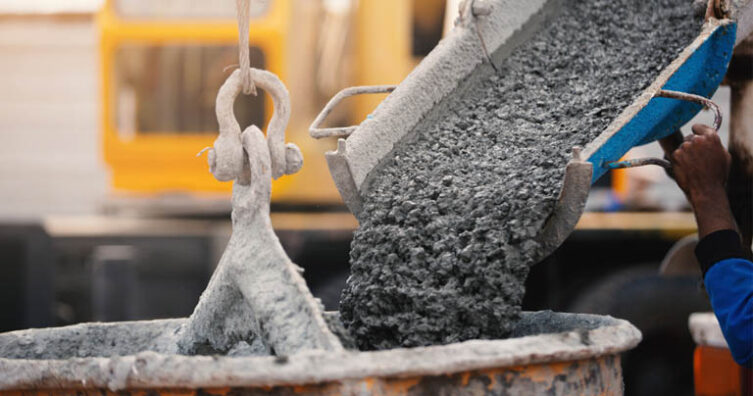“This development enables a faster recovery for the industry to gain momentum. Moreover, with businesses falling back, the demand for commercial infrastructure has grown. Furthermore, environmental concerns highlight that builders and consumers focus more on efficiency and eco-friendliness by choosing Ready-Mix-Concrete.
Supply chain challenges while procuring raw materials While the prices of raw materials like gypsum, fly ash, sand and coal are fluctuating globally, and the Indian supply chain industry is facing the brunt of weak demand and escalating operational costs. Also, there is massive pressure on the cement sector’s industry players and their supply chains due to the input cost.
Considering the ongoing trends, Kanodia comments, “To meet the ever-increasing demand for cement, the Indian Cement Industry may import raw materials like gypsum clinker etc.” On the other hand, Reddy believes the industry is faring well as long as demand remains steady amidst the constant increase in raw material prices. But the revenue generation for the Ready-Mix-Concrete business.
Moreover, if this persists, the cement and RMC companies will be forced to increase their prices to combat this hike in the price of raw materials. However, supply is on a growth trajectory, “Reddy continues.
Sustainability in cement and RMC
Compared to traditional concrete mixing, RMC is more uniform, resulting in less waste of natural resources such as water. Aparna has implemented numerous steps to reduce our carbon footprint. According to Reddy, one such approach is the utilisation of big storage bins to store RMC, ensuring a continuous supply while minimising fuel emissions from unnecessary transport. Kanodia explains how their company is reducing direct emissions by cooperating with transporters who use electric trucks to transport raw materials. To lower our carbon footprint, we use as many supplemental compendium materials as possible, such as fly ash and slag, to produce PPC/Composite/Slag Cement. We are dedicated to achieving net zero compliance.
In addition, the company is installing solar power units near their grinding facilities. Finally, all other indirect emissions from the organisation’s actions come from sources over which they have no control. These often account for the lion’s share of the carbon footprint, covering emissions related to business travel, raw material procurement, waste management, water treatment, etc. Kanodia Cement prioritises suppliers of packaging materials with low carbon emissions. In addition to the preceding, we follow the rules for plant maintenance at regular intervals.
Future business prospects for cement and other building materials
The building materials industry has shown incredible resilience recently, and the outlook remains positive despite the economic downturn. The segment currently has a market size of around USD 225 billion, and the overall growth rate is expected to be 10 per cent. Reddy expresses his optimism by saying, “The business and demand look promising.” Quality-conscious customers will drive demand and sales even further, particularly for high-end products in the building materials segment.
Kanodia concludes, “Right now, India is a developing country. More and more development and infrastructure projects will be required to enter a developed country. Hence, the outlook for construction and infrastructure projects will be very optimistic in the coming years. “The transformative approach of Prime Minister Gati Shakti to economic growth and sustainable development.”
The strategy is propelled by seven engines: roads, railways, airports, ports, mass transportation, waterways, and logistic infrastructure. These seven engines are backed up by energy, transmission, information technology, bulk water and sewerage, and social infrastructure. During the current fiscal year (2022-23), the government prioritised major projects such as expanding the 25000-Kms National Highway Network. In addition to the four multimodal logistic parks mentioned above, One Station-One Product, Mass Urban Transport including Connectivity to Railways (METRO), Parvatmala, River Linkage Projects, and Smart City Projects, with an estimated budget of 60000/-Cr, will connect 3.80 Cr households under Har Ghar, Nal Se Jal. There are approximately 80 lac houses to be built under the PM Awas Yojna with a budget of 48000/Crores, air connectivity via Udan, the PM’s Development Initiative for the North East Region, an increase in ticket size houses due to COVID-19 in urban and rural areas, and many infrastructure and development projects under PP Models, among other things.
“We are in the process of building a solar power unit near our grinding units for efficiency and sustainability”. Vishal Kanodia, Managing Director,Kanodia Cement Limited.
“Quality-conscious customers will be further driving the demand and sales, especially for high-end products in cement and RMC.” Ashwin Reddy, Managing Director, Aparna Enterprises.
Cookie Consent
We use cookies to personalize your experience. By continuing to visit this website you agree to our Terms & Conditions, Privacy Policy and Cookie Policy.


















